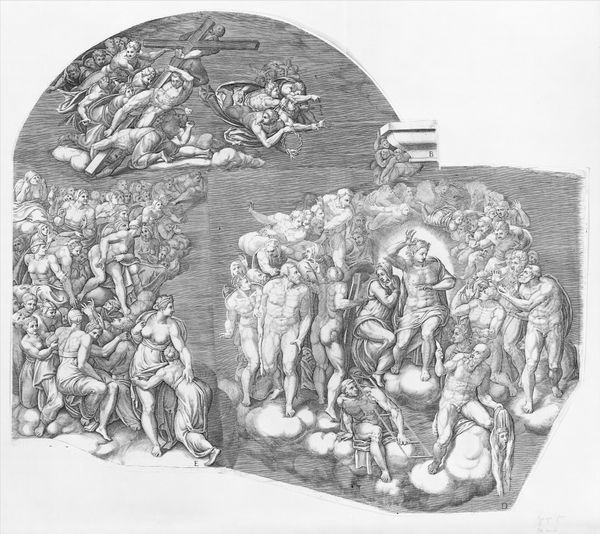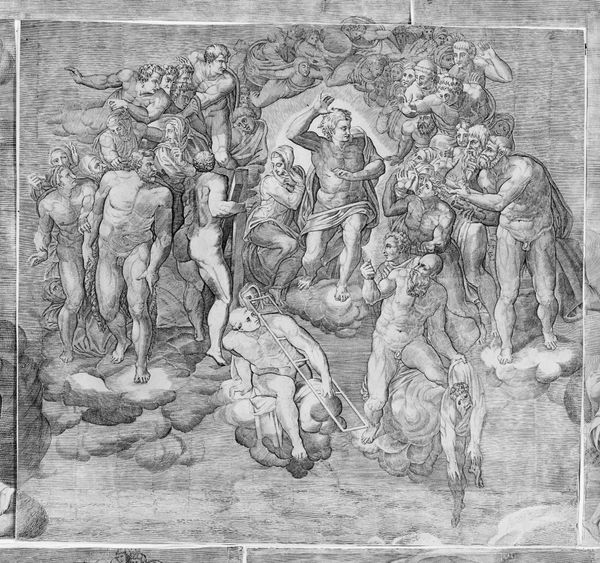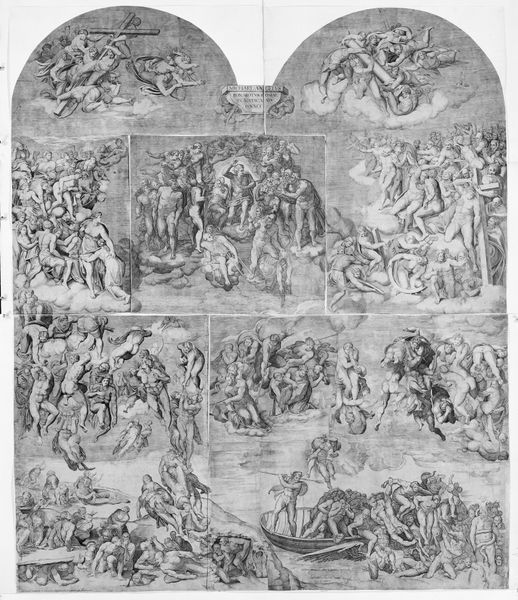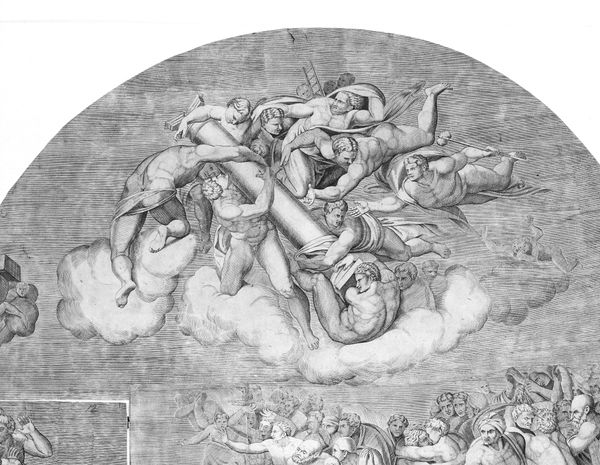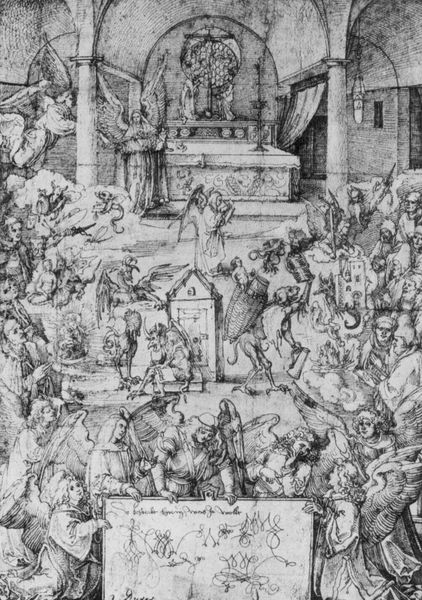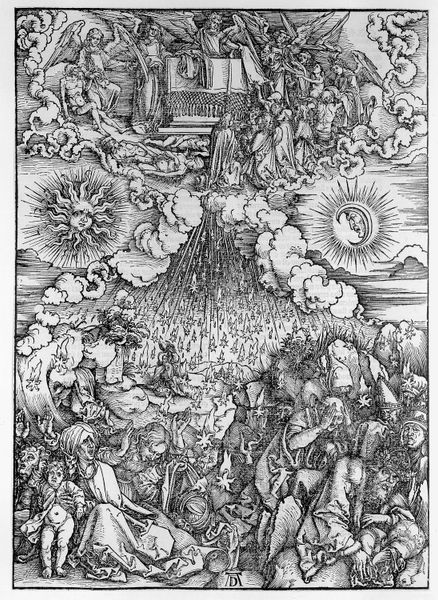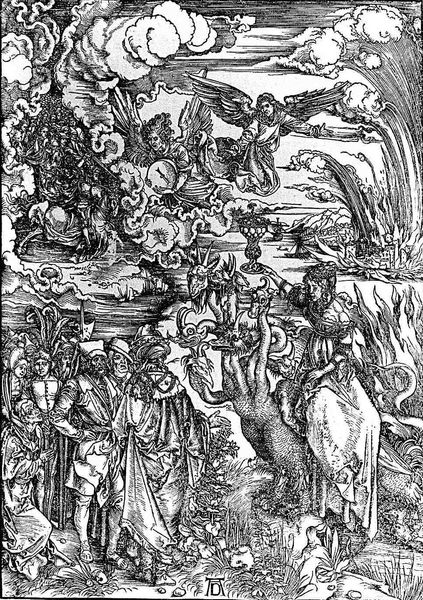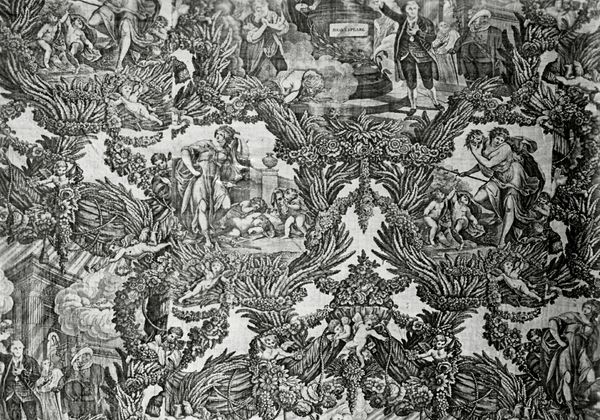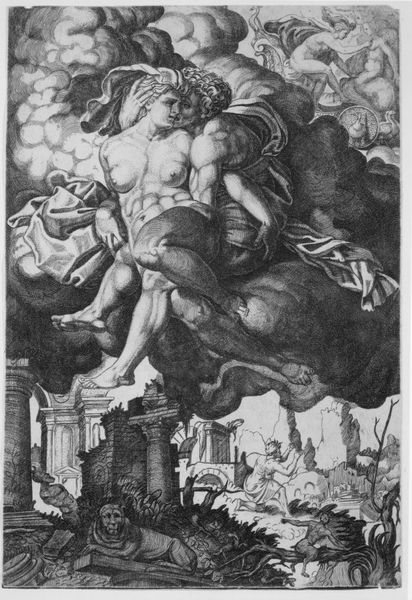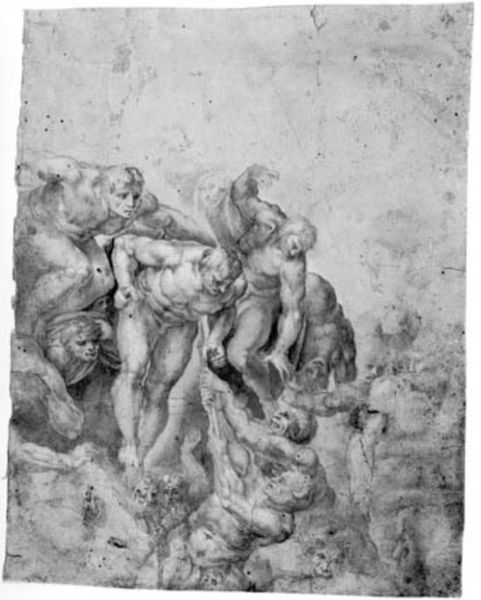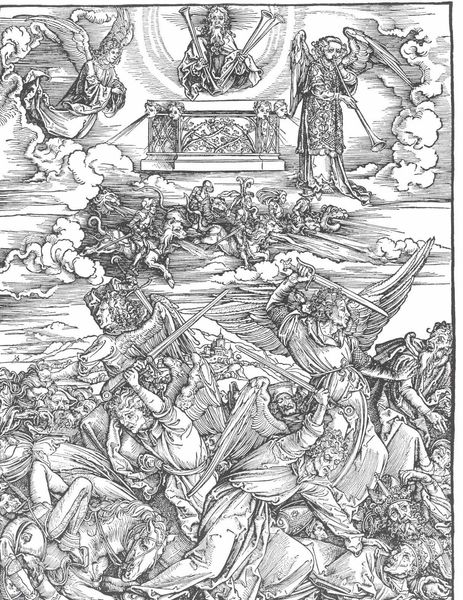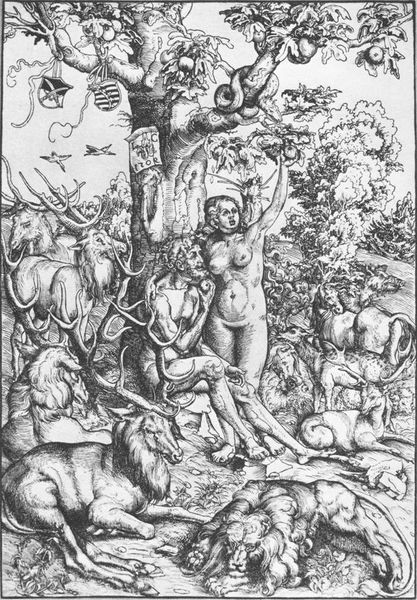
drawing, print, etching
#
drawing
#
high-renaissance
#
allegory
# print
#
etching
#
figuration
#
chiaroscuro
#
history-painting
#
italian-renaissance
Copyright: Public Domain
Editor: Here we have Nicolas Beatrizet’s print from 1562, titled "Michelangelo's Last Judgment," currently residing at The Met. The sheer volume of figures is overwhelming! How do you even begin to interpret something this grand and complex? Curator: It’s overwhelming by design. This print, rendered from Michelangelo’s iconic fresco in the Sistine Chapel, speaks volumes about the shifting religious and political climates of the 16th century. Consider, first, that the Last Judgment fresco itself sparked immediate controversy upon its unveiling. What aspects of the original fresco might have generated such strong reactions, do you think? Editor: Well, the nudity is pretty striking! I could imagine that raising some eyebrows, especially for the time. Curator: Exactly! And it wasn't merely prudishness at play. The unidealized, muscular bodies, devoid of classical modesty, challenged conventional notions of divine representation and, by extension, the authority of the Church. Prints like Beatrizet’s disseminated this radical vision far beyond the Vatican walls, transforming it into a publicly debated image. We must remember the socio-political importance of the Printing Revolution. The image became accessible beyond those who visited the Sistine Chapel. Editor: So, the print democratized the controversy, spreading the debate even further? Curator: Precisely. Consider the context: the rise of Protestantism, the Counter-Reformation. The Last Judgement became a battleground for competing theological and aesthetic ideals. Prints amplified and fueled these ideological clashes. Beatrizet’s work exists within a world shaped by evolving technology of the print, making art a more accessible medium than ever. Editor: That’s fascinating! It’s not just a religious scene, it’s a document of a cultural and political struggle. I’ll never look at this the same way again. Curator: Indeed. And by thinking about the image in the context of the technology through which it was proliferated, its socio-political role comes into clearer focus.
Comments
No comments
Be the first to comment and join the conversation on the ultimate creative platform.
